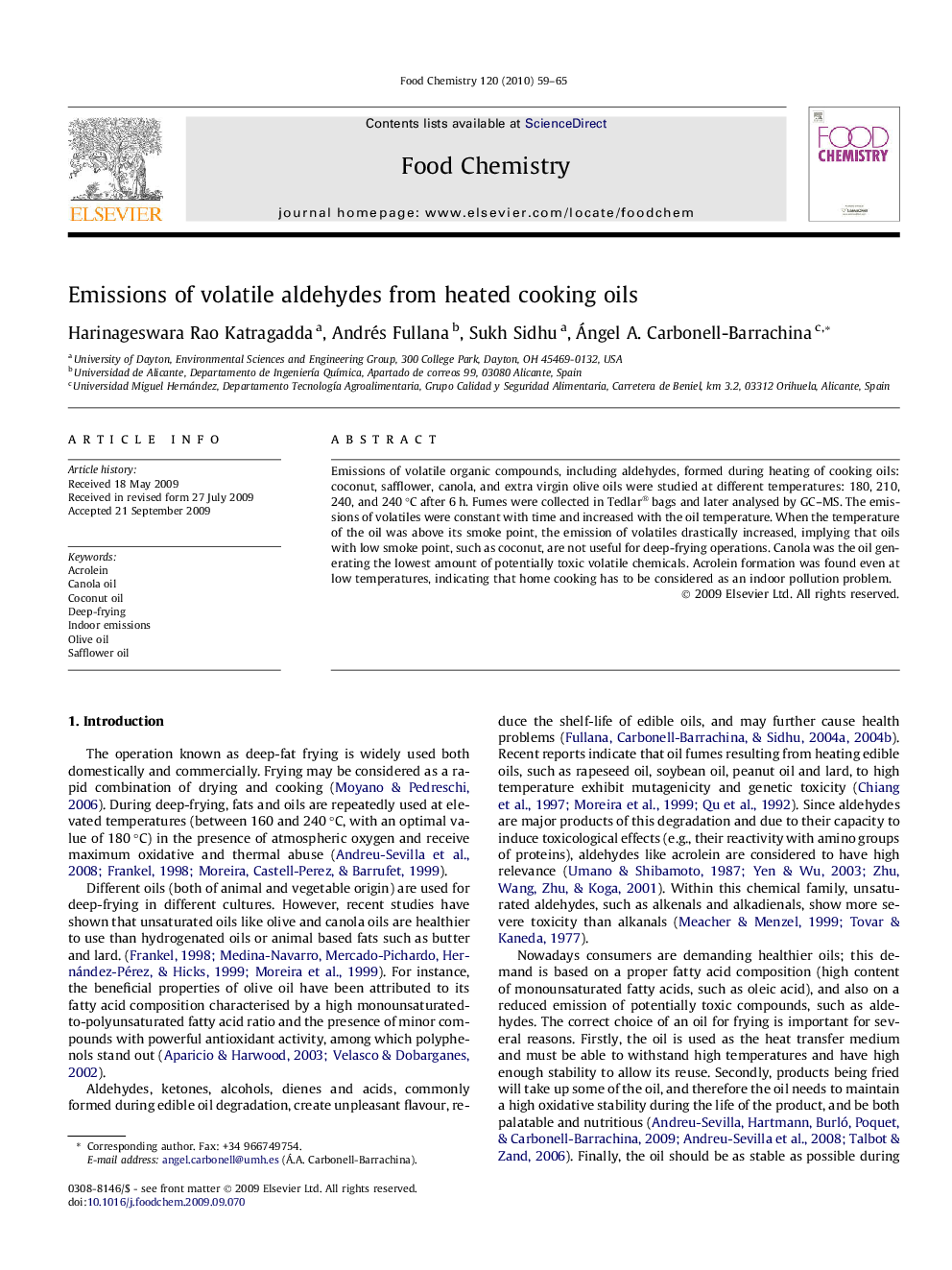| Article ID | Journal | Published Year | Pages | File Type |
|---|---|---|---|---|
| 1186965 | Food Chemistry | 2010 | 7 Pages |
Emissions of volatile organic compounds, including aldehydes, formed during heating of cooking oils: coconut, safflower, canola, and extra virgin olive oils were studied at different temperatures: 180, 210, 240, and 240 °C after 6 h. Fumes were collected in Tedlar® bags and later analysed by GC–MS. The emissions of volatiles were constant with time and increased with the oil temperature. When the temperature of the oil was above its smoke point, the emission of volatiles drastically increased, implying that oils with low smoke point, such as coconut, are not useful for deep-frying operations. Canola was the oil generating the lowest amount of potentially toxic volatile chemicals. Acrolein formation was found even at low temperatures, indicating that home cooking has to be considered as an indoor pollution problem.
